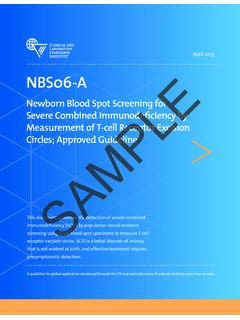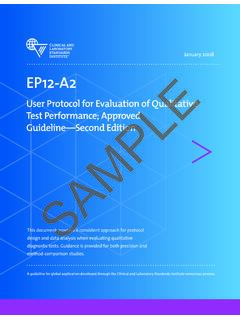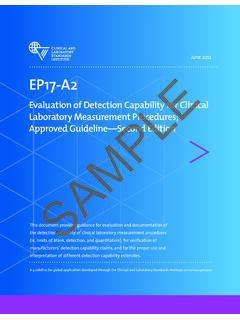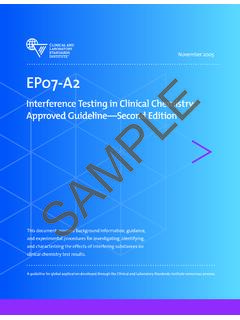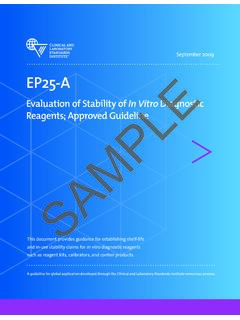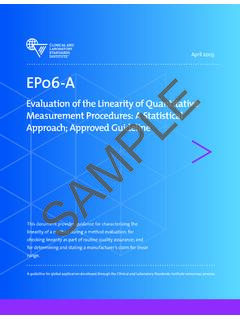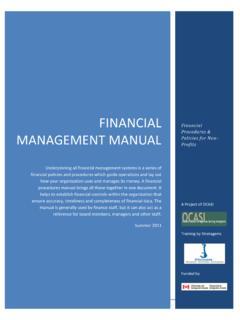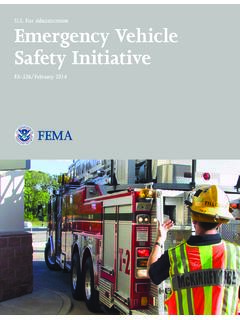Transcription of M07: Methods for Dilution Antimicrobial Susceptibility ...
1 M07 Methods for Dilution Antimicrobial Susceptibility Tests for Bacteria That Grow AerobicallyThis standard covers reference Methods for determining minimal inhibitory concentrations of aerobic bacteria by broth macrodilution, broth microdilution, and agar standard for global application developed through the Clinical and Laboratory Standards Institute consensus EditionSAMPLEC linical and Laboratory Standards Institute Setting the standard for quality in medical laboratory testing around the Clinical and Laboratory Standards Institute (CLSI) is a not-for-profit membership organization that brings together the varied perspectives and expertise of the worldwide laboratory community for the advancement of a common cause.
2 To foster excellence in laboratory medicine by developing and implementing medical laboratory standards and guidelines that help laboratories fulfill their responsibilities with efficiency, effectiveness, and global applicability. Consensus ProcessConsensus the substantial agreement by materially affected, competent, and interested parties is core to the development of all CLSI documents. It does not always connote unanimous agreement but does mean that the participants in the development of a consensus document have considered and resolved all relevant objections and accept the resulting agreement.
3 Commenting on DocumentsCLSI documents undergo periodic evaluation and modification to keep pace with advances in technologies, procedures, Methods , and protocols affecting the laboratory or health s consensus process depends on experts who volunteer to serve as contributing authors and/or as participants in the reviewing and commenting process. At the end of each comment period, the committee that developed the document is obligated to review all comments, respond in writing to all substantive comments, and revise the draft document as appropriate.
4 Comments on published CLSI documents are equally essential and may be submitted by anyone, at any time, on any document. All comments are managed according to the consensus process by a committee of experts. Appeal ProcessWhen it is believed that an objection has not been adequately considered and responded to, the process for appeal, documented in the CLSI Standards Development Policies and Processes, is comments and responses submitted on draft and published documents are retained on file at CLSI and are available upon request.
5 Get Involved Volunteer!Do you use CLSI documents in your workplace? Do you see room for improvement? Would you like to get involved in the revision process? Or maybe you see a need to develop a new document for an emerging technology? CLSI wants to hear from you. We are always looking for volunteers. By donating your time and talents to improve the standards that affect your own work, you will play an active role in improving public health across the additional information on committee participation or to submit comments, contact and Laboratory Standards Institute950 West Valley Road, Suite 2500 Wayne, PA 19087 USA P: + : M07, 11th 2018 Replaces M07-A10 Methods for Dilution Antimicrobial Susceptibility Tests for Bacteria That Grow Aerobically Melvin P.
6 Weinstein, MD Brandi Limbago, PhD Jean B. Patel, PhD, D(ABMM) Amy J. Mathers, MD, D(ABMM) Carey-Ann Burnham, PhD, D(ABMM) Tony Mazzulli, MD, FACP, FRCP(C) Shelley Campeau, PhD, D(ABMM) Susan D. Munro, CLS, MT(ASCP) Patricia S. Conville, MS, MT(ASCP) Margaret Ordo ez Smith de Danies, PhD Christopher Doern, PhD, D(ABMM) Robin Patel, MD George M. Eliopoulos, MD Sandra S. Richter, MD, D(ABMM), FCAP, FIDSAM arcelo F. Galas Michael Satlin, MD, MS Romney M. Humphries, PhD, D(ABMM) Jana M.
7 Swenson, MMSc Stephen G. Jenkins, PhD, D(ABMM), F(AAM) Alexandra Wong, BS, MT(ASCP), SM Susan M. Kircher, MS, MT(ASCP) Wayne F. Wang, MD, PhD James S. Lewis II, PharmD, FIDSA Barbara L. Zimmer, PhD Abstract Antimicrobial Susceptibility testing is indicated for any organism that contributes to an infectious process warranting Antimicrobial chemotherapy, if its Susceptibility cannot be reliably predicted from knowledge of the organism s identity. Susceptibility tests are most often indicated when the causative organism is thought to belong to a species capable of exhibiting resistance to commonly used Antimicrobial agents.
8 Various laboratory Methods can be used to measure the in vitro Susceptibility of bacteria to Antimicrobial agents. Clinical and Laboratory Standards Institute standard M07 Methods for Dilution Antimicrobial Susceptibility Tests for Bacteria That Grow Aerobically describes standard broth Dilution (macrodilution and microdilution [the microdilution method described in M07 is the same methodology outlined in ISO 20776-11]) and agar Dilution techniques, and it includes a series of procedures to standardize the way the tests are performed.
9 The performance, applications, and limitations of the current CLSI-recommended Methods are also described. The supplemental information (M1002 tables) used with this standard represents the most current information for drug selection, interpretation, and quality control using the procedures standardized in M07. Clinical and Laboratory Standards Institute (CLSI). Methods for Dilution Antimicrobial Susceptibility Tests for Bacteria That Grow Aerobically. 11th ed. CLSI standard M07 (ISBN 1-56238-836-3 [Print]; ISBN 1-56238-837-1 [Electronic]).
10 Clinical and Laboratory Standards Institute, 950 West Valley Road, Suite 2500, Wayne, Pennsylvania 19087 USA, 2018. The Clinical and Laboratory Standards Institute consensus process, which is the mechanism for moving a document through two or more levels of review by the health care community, is an ongoing process. Users should expect revised editions of any given document. Because rapid changes in technology may affect the procedures, Methods , and protocols in a standard or guideline, users should replace outdated editions with the current editions of CLSI documents.
